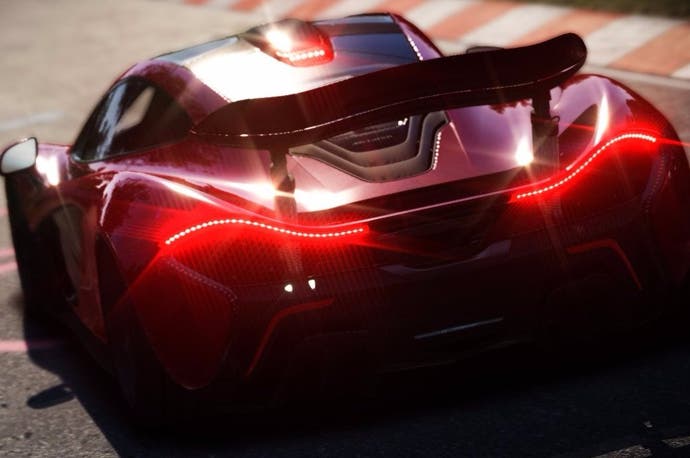Performance Analysis: Assetto Corsa
An ambitious PC racing sim comes to console - but how smoothly does it play?
Having first launched on PC in 2014, Assetto Corsa made its mark with a push for accurate car physics - a key selling point that sadly wrestles with the more CPU-restricted designs of PS4 and Xbox One. The logic here is clear: the more cars simulated on a circuit during a race, the bigger the hit to frame-rates on console. Your mileage may vary as a result of how you set your vehicle count, but it's disappointing to see the game veer so far away from its target 60fps - coupled with aggressive tearing - when set to anything between 10 and 16 cars.
We've been here before with the likes of Project Cars, of course. There we had another ambitious PS4 and Xbox One racing sim that struck 60fps quite happily with eight cars and less, but cranking that to 16 and above caused it sub-50fps levels of performance. In Assetto Corsa's case however, the consequences for pushing the car count up are actually more restrictive. Even with just 10 cars on the road we're faced with performance at the lower end of 45-60fps. Taken to its maximum 16 cars, this number drops to the 35-50fps region on both consoles. One difference between Assetto Corsa and Project Cars (and indeed the F1 titles, which also possess similar performance issues) is that both PS4 and Xbox One operate at 1080p resolution, though the Sony console's anti-aliasing solution is more effective on smoothing off the jagged edges.
This is also coupled with full-screen tearing. In some respects this is a benefit to the game's playability; on the one hand, yes, it sticks out like a sore thumb when turning a corner - lateral motion plus sharp contrasting edges tends to exacerbate the visibility of the tear-lines. But on the other, this artefact means each frame is output as closely to its 16.7ms render time as possible. Whether the frame is complete or not, it gives the player as much visual feedback as possible within each second of gameplay - a crucial component of any racing sim.
It's unfortunate then, that a majority of the quick races in Assetto Corsa's otherwise well-designed Special Events mode tend to fixate on races with 10 or more cars, giving both PS4 and Xbox One similar frame-rate issues. We're looking at 50fps and below for the majority of a race, especially in accelerating from the starting grid with the pack. The frame-rate steers closer to 60fps once the competition starts too spread out, but expectedly, that's typically after a completing lap or two.
Surprisingly, even in the best case scenario with just a single car on-screen, tearing is still an issue. On courses like Spa or Vallelunga the game runs at 60fps on PS4 and Xbox One for solo time trials for 99 per cent of the time, but we still get dips to 58fps there and tearing remains noticeable.
So put into perspective, Assetto Corsa appears to have a CPU bottleneck on PS4 and the original Xbox One. In a direct contest between the two consoles, we push the engine to the max with all 15 AI cars in play, and there's a clear PS4 advantage in this case. Regardless of which view you use - cockpit, top-down, or bumper - Sony's machine leads by around 5fps, and at peak the divide can creep up to 10fps. The exception here is on the Spa Circuit in bumper-cam view, where the two are typically neck-and-neck, though overall we're looking a performance lead on PS4.
It's worth noting that the recorded frame-times on both versions are also far from stable, representing visible stutter on top of the tearing - it suggest a battle of system bottlenecks within the console hardware. Generally speaking, the current frame rendered by the graphics core is very similar to the last, so GPU-bound scenarios tend to see level frame-times. Clearly, this isn't the case here.
It's a shame that neither can lock down 60fps, but one question remains: how does the S model fare with its slightly higher clocked GPU? We gave this a quick test too, and while there is a definite boost on balance, the gain is fairly minimal - in the region of 3fps to 4fps at best over the original Xbox One. It's not enough to quite bridge the gap with PS4, and with the car count set to the full 16 in Assetto Corsa, it's looking increasingly likely we're going to need more powerful console hardware to get the job done.










